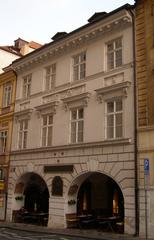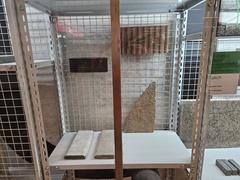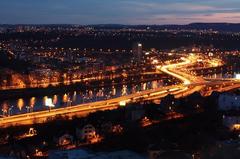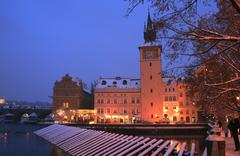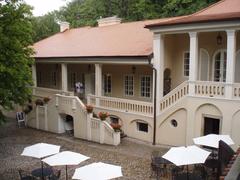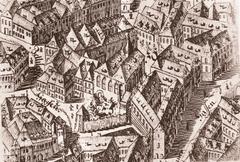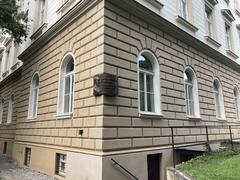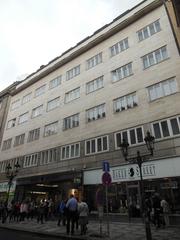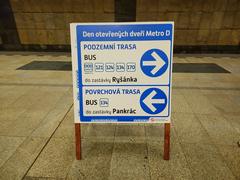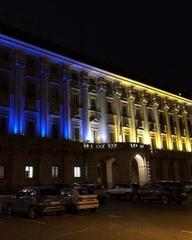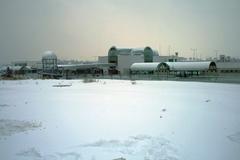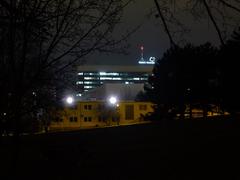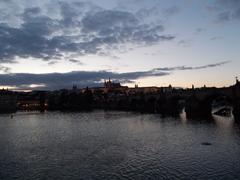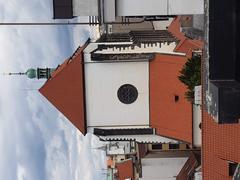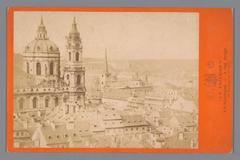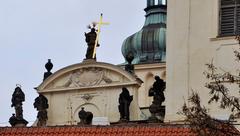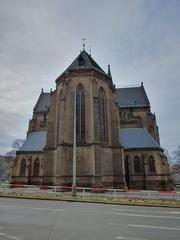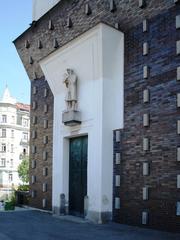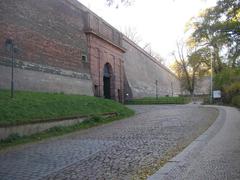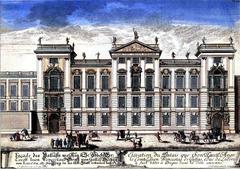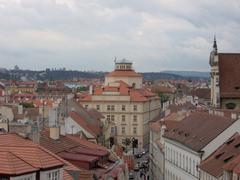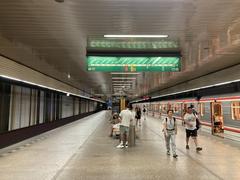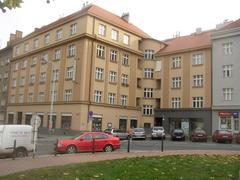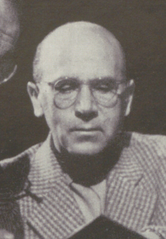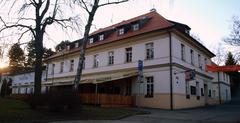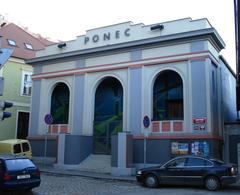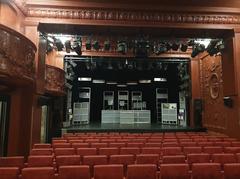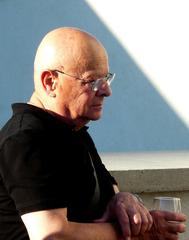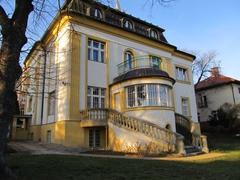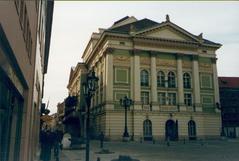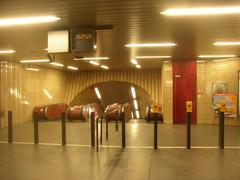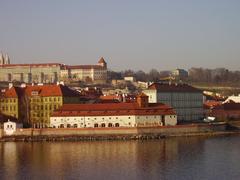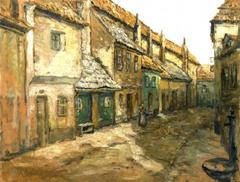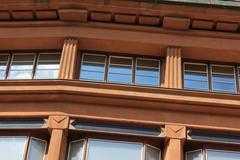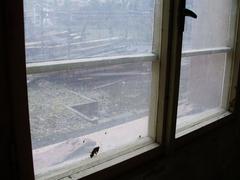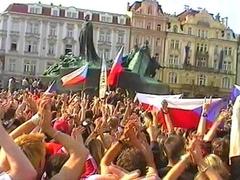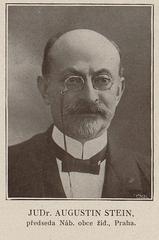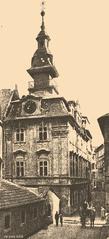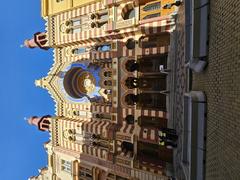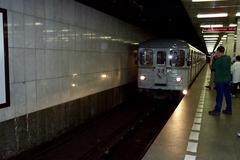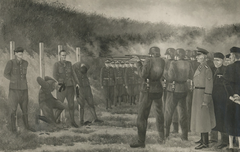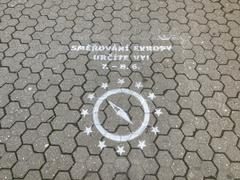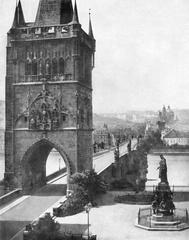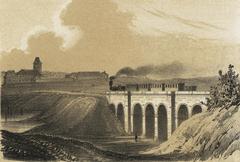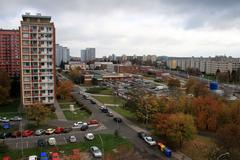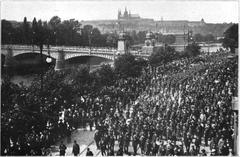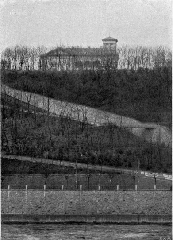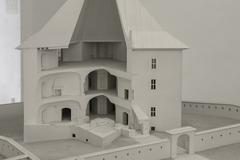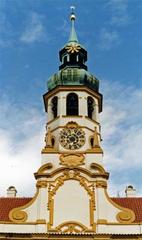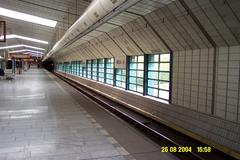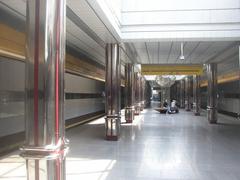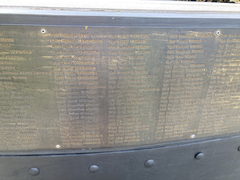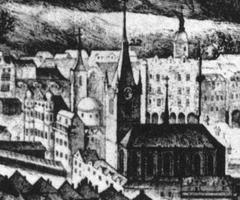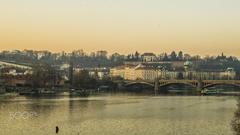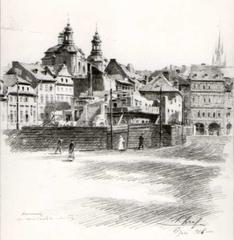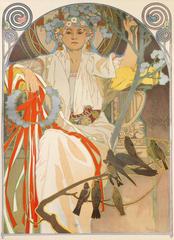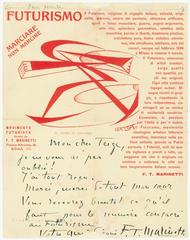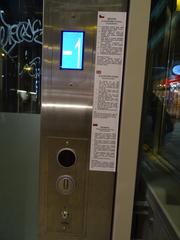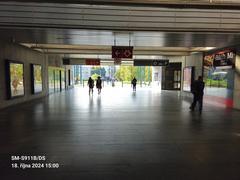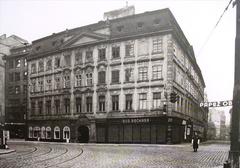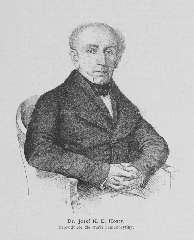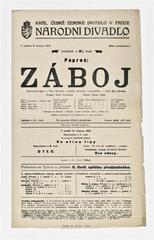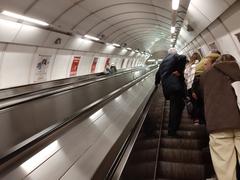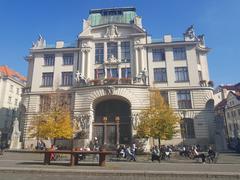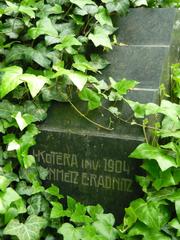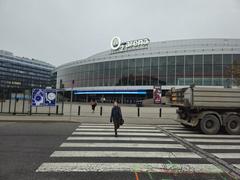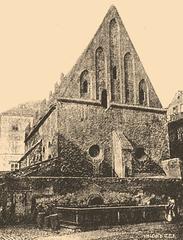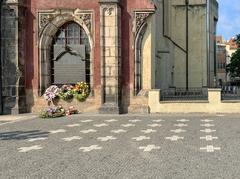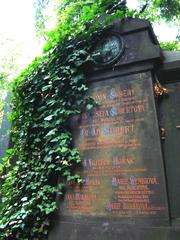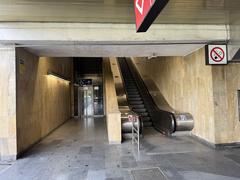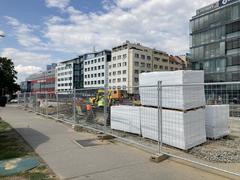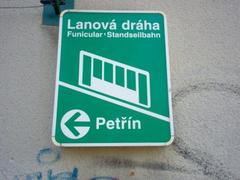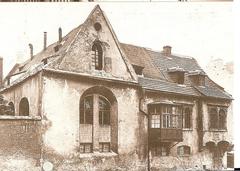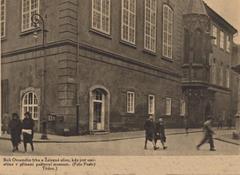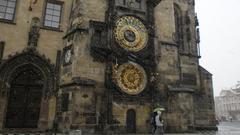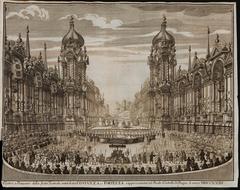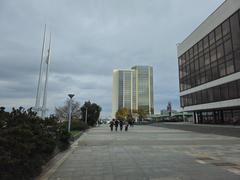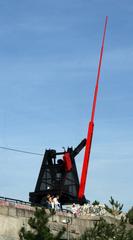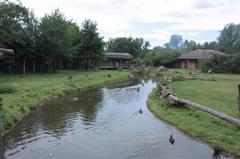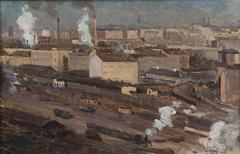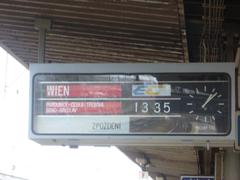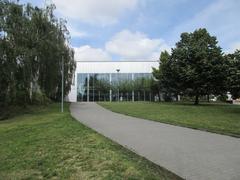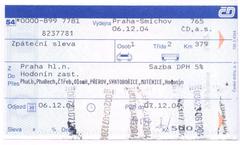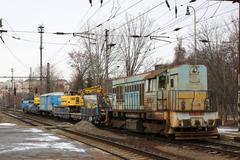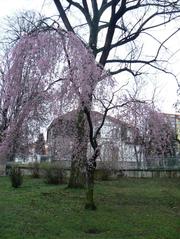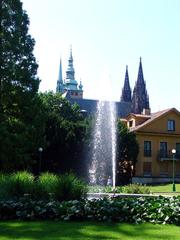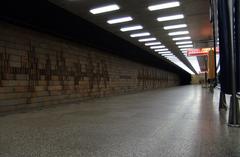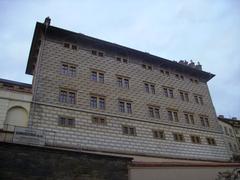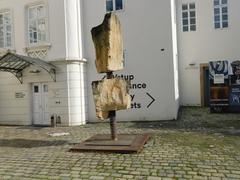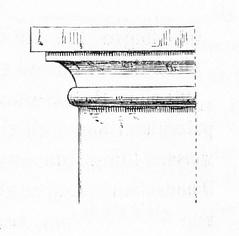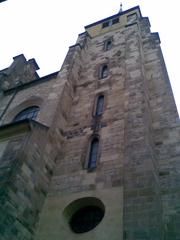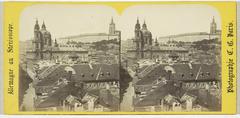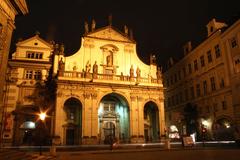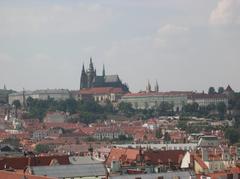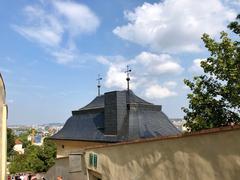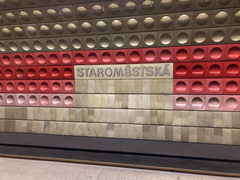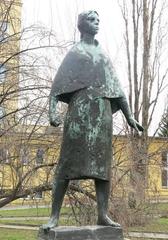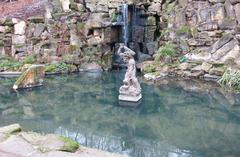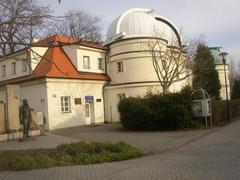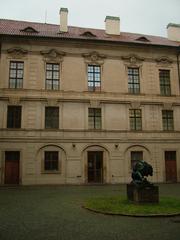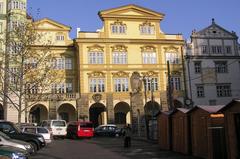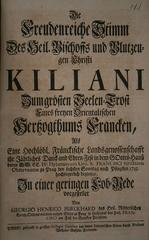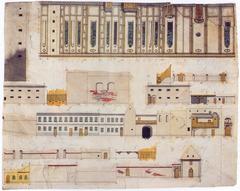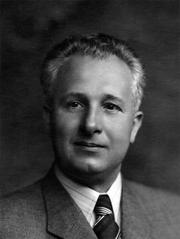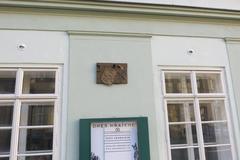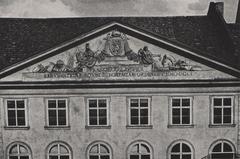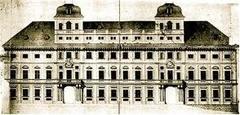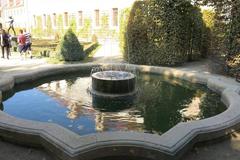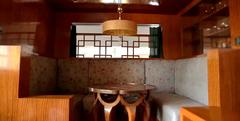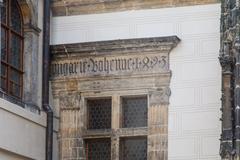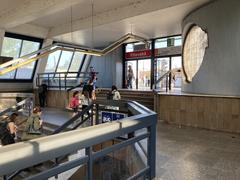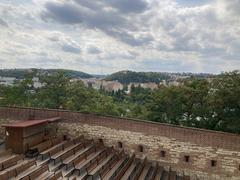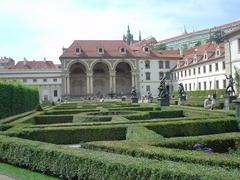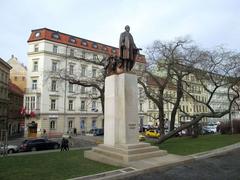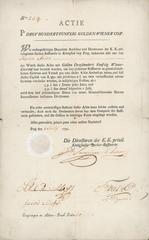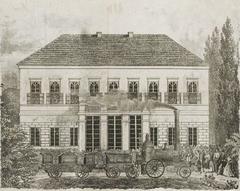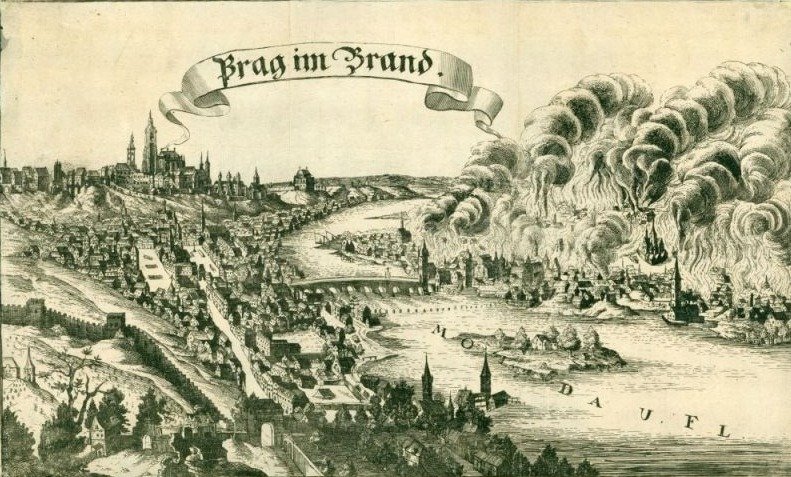
Hunger Wall Visiting Hours, Tickets, and Historical Significance in Prague
Date: 23/07/2024
Introduction
The Hunger Wall, or ‘Hladová zeď,’ stands as a poignant testament to Prague’s rich medieval history and the benevolent reign of Charles IV. Constructed between 1360 and 1362, during a period of severe famine, this defensive structure was not just a strategic military fortification but also a public works project aimed at providing employment and sustenance to the city’s impoverished citizens (Radio Prague International). Located in the picturesque Petřín Park, the wall extends approximately 1,350 meters and includes bastions and watchtowers that exemplify Gothic architectural design (Prague.eu). Today, the Hunger Wall is a cherished cultural landmark, symbolizing resilience, community spirit, and the innovative solutions of medieval governance. It attracts visitors from around the world who are eager to explore its historical and architectural significance, as well as the natural beauty of its surroundings (Prague City Tourism).
Table of Contents
- [Discover the History and Visiting Tips for Prague’s Hunger Wall](#discover-the-history-and-visiting-tips-for-pragues-hunger-walldiscover-the-history-and-visiting-tips-for-pragues-hunger-wall)
- [Origins and Construction](#origins-and-constructionorigins-and-construction)
- [Socio-Economic Context](#socio-economic-contextsocio-economic-context)
- [Architectural Features](#architectural-featuresarchitectural-features)
- [Historical Significance](#historical-significancehistorical-significance)
- [Restoration and Preservation](#restoration-and-preservationrestoration-and-preservation)
- [Cultural Impact](#cultural-impactcultural-impact)
- [Modern-Day Relevance](#modern-day-relevancemodern-day-relevance)
- [Visitor Information](#visitor-informationvisitor-information)
- [Special Events and Guided Tours](#special-events-and-guided-toursspecial-events-and-guided-tours)
- [Photographic Spots](#photographic-spotsphotographic-spots)
- [Visitor Tips](#visitor-tipsvisitor-tips)
- [Frequently Asked Questions (FAQ)](#frequently-asked-questions-faqfrequently-asked-questions-faq)
- [Conclusion](#conclusionconclusion)
Discover the History and Visiting Tips for Prague’s Hunger Wall
Origins and Construction
The Hunger Wall, known in Czech as “Hladová zeď,” is a significant historical structure in Prague, Czech Republic. Its construction dates back to the reign of Charles IV, Holy Roman Emperor and King of Bohemia, in the mid-14th century. Specifically, the wall was built between 1360 and 1362. The primary purpose of the wall was to fortify the southern part of the Lesser Town (Malá Strana) and the Hradčany district, providing additional defense for Prague Castle (Prague.eu).
Socio-Economic Context
The construction of the Hunger Wall is deeply intertwined with the socio-economic conditions of the time. During the mid-14th century, Prague experienced a severe famine. To alleviate the suffering of the city’s poor and unemployed, Charles IV initiated the construction of the wall as a public works project. This initiative provided much-needed employment and income to the impoverished citizens, hence the name “Hunger Wall” (Radio Prague International).
Architectural Features
The Hunger Wall stretches approximately 1,350 meters (4,429 feet) and originally stood about 4 to 4.5 meters (13 to 15 feet) high. The wall was constructed using local sandstone and limestone, materials readily available in the region. Over the centuries, the wall has undergone several restorations, but much of its original structure remains intact. The wall’s design includes several bastions and watchtowers, which were essential for its defensive purpose (Prague City Tourism).
Historical Significance
The Hunger Wall holds a unique place in Prague’s history, not only as a defensive structure but also as a symbol of social welfare and the benevolence of Charles IV. The wall’s construction during a time of famine highlights the medieval approach to addressing economic crises through public works. This initiative is often cited as an early example of a government-sponsored employment program (Czech Tourism).
Restoration and Preservation
Over the centuries, the Hunger Wall has faced various challenges, including natural wear and damage from historical events. Significant restoration efforts were undertaken in the 20th century to preserve this historical monument. The most notable restoration occurred in the 1920s under the direction of architect Kamil Hilbert, who aimed to maintain the wall’s historical integrity while ensuring its structural stability (Prague.eu).
Cultural Impact
The Hunger Wall has inspired various cultural references and artistic works. It is often mentioned in Czech literature and folklore as a symbol of resilience and community spirit. The wall’s historical and cultural significance makes it a popular subject for local artists and writers, contributing to its enduring legacy in Czech culture (Radio Prague International).
Modern-Day Relevance
Today, the Hunger Wall is a popular tourist attraction, drawing visitors from around the world who are interested in Prague’s rich history. The wall is located in Petřín Park, a large green space that offers stunning views of the city. Visitors can walk along the wall and explore its various sections, gaining insight into its historical context and architectural features (Prague City Tourism).
Visitor Information
Visiting Hours - The Hunger Wall is accessible to the public 24 hours a day, although Petřín Park may have specific opening and closing times.
Tickets - There is no entrance fee to visit the Hunger Wall.
Accessibility - The terrain around the Hunger Wall can be uneven, so it’s advisable to wear comfortable walking shoes. The area is accessible, but some sections may be challenging for visitors with mobility issues.
Special Events and Guided Tours
Special events occasionally take place in Petřín Park, including historical reenactments and cultural festivals. Guided tours are available for those who wish to learn more about the wall’s history and significance. Check with local tour operators for schedules and availability.
Photographic Spots
The Hunger Wall offers several picturesque spots perfect for photography enthusiasts. Key locations include the bastions and watchtowers, which provide excellent vantage points for capturing the scenic views of Prague.
Visitor Tips
For those planning to visit the Hunger Wall, it is advisable to wear comfortable walking shoes, as the terrain can be uneven. The best time to visit is during the spring and summer months when the weather is pleasant, and the surrounding park is in full bloom. Guided tours are available for those who wish to learn more about the wall’s history and significance. Additionally, visitors can enjoy other attractions in Petřín Park, such as the Petřín Lookout Tower and the Mirror Maze (Czech Tourism).
Frequently Asked Questions (FAQ)
Q: What are the visiting hours for the Hunger Wall? A: The Hunger Wall is accessible to the public 24 hours a day, although Petřín Park may have specific opening and closing times.
Q: How do I get to the Hunger Wall? A: The Hunger Wall is located in Petřín Park. You can reach it by taking a funicular from Újezd or by walking from the Lesser Town.
Q: Is there an entrance fee for the Hunger Wall? A: No, visiting the Hunger Wall is free of charge.
Q: Are guided tours available? A: Yes, guided tours are available for those who wish to learn more about the wall’s history and significance. Check with local tour operators for schedules and availability.
Q: What other attractions are nearby? A: Nearby attractions include the Petřín Lookout Tower, the Mirror Maze, and the lush gardens of Petřín Park.
Conclusion
The Hunger Wall stands as a testament to Prague’s medieval history and the innovative solutions employed by its rulers to address social and economic challenges. Its enduring presence in the cityscape of Prague serves as a reminder of the past and a symbol of resilience and community spirit. Visitors to the Hunger Wall can not only appreciate its historical significance but also enjoy the natural beauty and cultural richness of the surrounding area.
References
- Discover the History and Visiting Tips for Prague’s Hunger Wall, 2024, Prague.eu
- Discover the History and Visiting Tips for Prague’s Hunger Wall, 2024, Radio Prague International
- Discover the History and Visiting Tips for Prague’s Hunger Wall, 2024, Prague City Tourism
- Discover the History and Visiting Tips for Prague’s Hunger Wall, 2024, Czech Tourism
- Visiting the Hunger Wall - History, Tickets, and Tips for Exploring Prague’s Medieval Landmark, 2024, GetYourGuide
- Visitor Tips for Hunger Wall, Prague, 2024, Prague.eu
- Visitor Tips for Hunger Wall, Prague, 2024, Prague City Tourism


